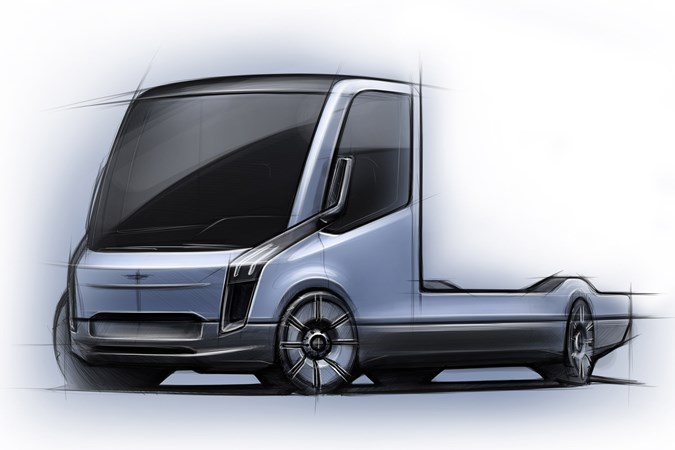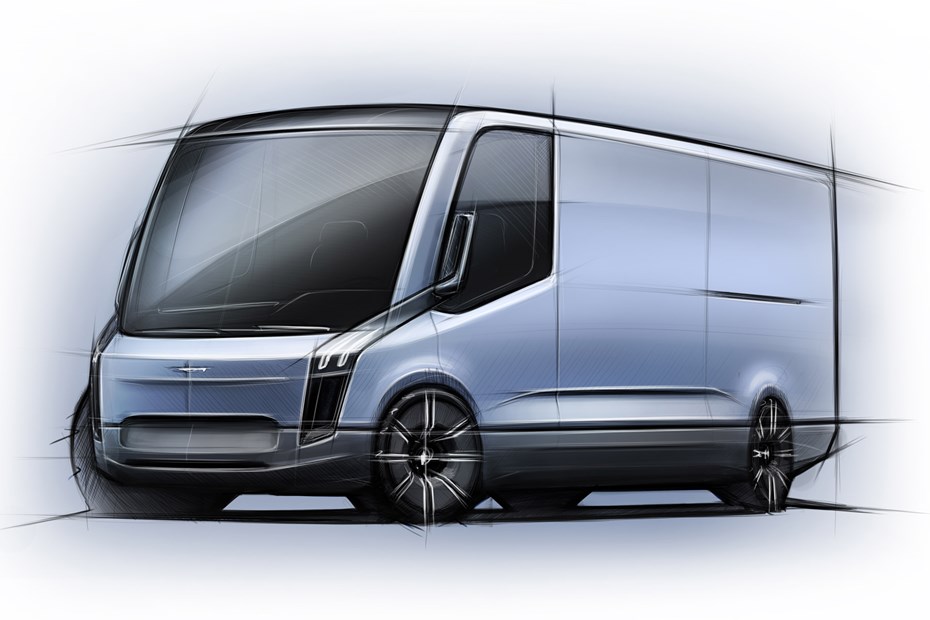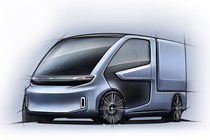British electric vehicle innovator the Watt Electric Vehicle Company has announced plans to build an all-new electric van using its own technology and brand name.
The new electric van, which is set to enter production in 2023, will use Watt’s bespoke PACES modular electric vehicle (EV) platform, which can apparently be easily customised for different body sizes, types and variants.
Watt on earth are you talking about?
The Watt EV Company – also known as WEVC – has developed a new electric vehicle platform that’s described as both ‘state of the art’ and ‘off-the-shelf.’
Called PACES – standing for Passenger And Commercial EV Skateboard – the architecture is designed as any easy means for ‘low-to-medium volume’ vehicle brands to easily create electric vehicles. Much of WEVC’s business case seems to rely on building new electric vehicles for other people, which it will do at its own facilities in Cornwall and the Midlands.

The ‘skateboard’ part of the name means that all of the electrical gubbins – the motor, the control units, the batteries – are integrated into a literal self-contained platform that can be adapted for use under different kinds of vehicles.
This is not a new concept; there are lots of other fledgling EV brands using a similar approach. In a sense, it also harks back to the old ‘body-on-frame’ vehicle manufacturing process that is still used by pickup trucks and some other commercial vehicles (though most passenger cars are ‘unibody’ or ‘monocoque’ in design these days).
So what’s actually innovative about the Watt PACES platform?
The difference for the PACES platform is that Watt EV has integrated the batteries completely into the structure, in what it calls a ‘cell-to-chassis structural battery system.’
Most electric vehicles use separate battery packs. By integrating the battery into the structure of the skateboard chassis, WEVC claims it can optimise weight and stiffness.
In the case of the proposed van, the lower the basic weight, the greater the payload. Especially important for electric vans as electric vehicle technology is traditionally much heavier than conventional diesel power.

The reason most rivals have chosen to use separate battery packs so far is ease of replacement, for batteries do lose performance over time. Having them so deeply integrated into the vehicle may be a potential pitfall here on that basis.
Are there any further details about the WEVC electric van?
Aside from the funky design sketches, WEVC’s founder and owner Neil Yates says the firm has already ‘been approached by a multiple commercial vehicle manufacturers and fleet operators, who are in desperate need of developing the next generation of electric vans, trucks and buses.’
Development and evaluation of the PACES platform has been underway for two years already and it’s now said to be ‘market ready’. A prototype van should be on the road early in 2022. The project is being supported by the government’s Innovate UK programme via the Transitioning to Zero Emissions Collaborative Research and Development competition.
Production of the new electric van is due to start in Q3 of 2023, at a new factory in the Midlands, at a scale of 2,500-5,000 vehicles a year.
WEVC’s first product, however, is a Porsche 356-inspired electric sportscar called the Coupe. Using the same PACES technology to incorporate a 40kWh battery directly in to the chassis, this rear-wheel drive machine has a WLTP driving range of 230 miles and does 0-62mph in just over five seconds. With initial examples priced from £81,250, however, it is not cheap.
We’ll bring you more info on the Watt Electric Vehicle Company van as soon as it’s available.
Also read:
>> The best electric vans you can buy now
>> Future electric vans coming soon
>> The Parkers guide to electric vans
>> Ford F-150 Lightning electric pickup – and how it might change electric vehicles forever
Just so you know, we may receive a commission or other compensation from the links on this website - read why you should trust us.








